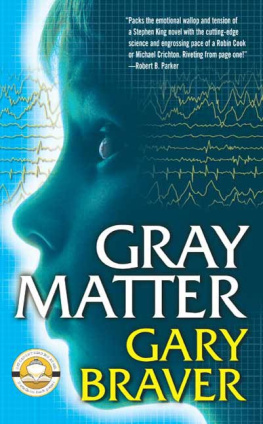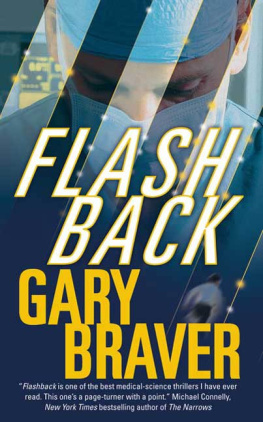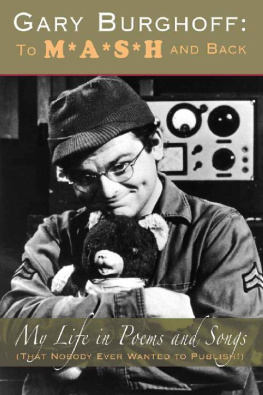I would like to thank the following people for providing me with medical, forensic, and other technical information.
From Northeastern University: from the Department of Counseling and Applied Psychology, Carmen Armengol; from the Department of Psychology, Joanne Miller and Harry MacKay; from the Department of Sociology, Jack Levin.
For their very generous time and expert insights, a special thanks to James Stellar, Professor of Behavioral Neuroscience and Dean of the College of Arts and Sciences, and John F. McDevitt, Assistant Professor, the College of Criminal Justice, Northeastern University.
I am also grateful to Drs. Regis deSilva, Jason McCormick, David Urion, and Gary Fischer.
In addition, I am grateful to Dr. James Weiner, Associate Chief Medical Examiner of Massachusetts; Kenneth Halloran, Clerk Magistrate, Plymouth County, Massachusetts; Lt. Richard W. Sequin, Massachusetts State Police; Lt. Thomas J. Gelman and Chief John Ford, Bourne Police Department; Sgt. Peter Howell, Sandwich Police Department; and Dr. Carl M. Selavka, Director of the Massachusetts State Police Crime Lab.
Thanks also to Jean Hagen, Pamela and Malcolm Childers, Kemmer and Martha Anderson, George and Donna Megrichian, Alice Janjigian, and Kathryn Goodfellow.
I also want to thank Charles ONeill and Barbara Shapiro for the brainstorms that made this a better story.
A very special thanks to my agent, Susan Crawford, my editor, Natalia Aponte, and my publisher, Tom Doherty, for their great support. You made this possible.
SIX MONTHS LATER
BOSTON
T he auditorium blazed in colored lights.
The stage was set with Christmas trees, giant candles, and nutcracker soldiers. Large shiny ornaments hung from the rafters. The orchestra, formally attired in black and white, was warming up as the children filed in to take their places on the dais.
It was the Childrens Yuletide Pageant at Symphony Hall, and from all over the commonwealth, young people had been selected to make up the special holiday choir.
Dylan was in the second row dressed like all the rest in a white robe.
Rachel had managed to get tickets in the orchestra, middle section, ten rows back, so that Dylan could see them from the stage. When he spotted them, he broke into a wide grin and waved.
And Rachels heart flooded with love.
While the performers got settled, her mind rumbled back to that awful night six months ago.
They had seen things almost too sordid to imagine, and it still sickened her that they had been unwitting parties to it all. Over the course of a decade, Malenko had enhanced over eighty children, kidnapping as many from randomly scattered locales across the country so as not to establish any coherence. He had apparently had a small but organized network of people who did freelance kidnappings almost always from poor rural families where the authorities had neither the resources nor the wherewithal for deep investigations. They were diabolically clever, often staging the disappearances as fatal accidents.On a few occasions they had crossed the border into Mexico and bought snatched street kids from local criminals. They never left tracks or telltale clues connecting the disappearances.
Luckily, the little boy who had been the harvest for Dylan had suffered no brain damage. His name was Travis Valentine, a gifted child with a love of butterflies, who had been safely returned to his mother in Florida.
As for the enhanced kids, some were Malenkos clients from the Nova Childrens Center. But neither the parents nor other Nova clinicians had any idea of Malenkos secret practice nor how he had scanned the database for prospective harvestsnor the fact that those children had been stolen, rendered brain-damaged, and disposed of at sea.
As one reporter had written: The brain is the most wondrous creation in the universeand, as Lucius Malenko had confirmed, the most frightening.
The media had dubbed him a latter-day Josef Mengele.
And like his Nazi counterparts, Malenko kept extensive records of his practice. He even had a photo album and full medical report on each enhanced child, allowing authorities to contact the parents. None claimed any knowledge of the harvesting. While nearly all the treated children were exceptionally bright, some suffered serious behavioral problems that were being treated by medication and counseling.
The kids who had made up the surgical team were turned over to juvenile courts. Nicole DaFoe was arrested for the murder of Martin and was awaiting trial as an adult. The surviving cronies of Malenko were indicted for serial kidnappings and murder.
Rachel wore a permanent scar on her arm from the scalpel attack.
Because of the awful associations, Rachel sold her house in Hawthorne and moved to Arlington, which bordered Cambridge and which had a more diversified population. In the fall, Dylan was enrolled in a local school where they had a well-trained support system for LD children. And, most importantly, he was very happy.
When it was discovered that Sheila had recruited Rachel and Martin on the promise of a commission from Malenko, she was arrested for being an accessory to crimesalthough her lawyers would probably get her off on a lighter sentence of abetting medical malpractice rather than kidnapping and murder. It was also discovered that she had switched videocassettes the night of Vanessa Wattss death, having been spotted by one of the waiters.
Brendan LaMotte was put in the care of neurologists at Childrens Hospital. When he had visited Rachel last weekend, he seemed to be doing much better and was back in school. To the delight of his grandfather, he was talking about going to college next year.
A burst of applause brought Rachel back to the moment. The conductor had entered the stage.
Shortly the program began, and Rachel took Greg Zakarians hand and settled back.
She had, of course, gone through the Kubler-Ross stages of dealing with Martins deathdenial, anger, a sense of sadness and grief. She even still harbored guilt for the loss of him. And, yet, with Gregs help she had come to believe that what she had done was necessary to save her sons life.
Of course, Dylan missed Martin. He sometimes spoke of him, recalling some of the things they had done together. And for a few weeks, he wore his fathers college ring on a chain around his neck. But that soon ended up in a bureau drawer. And that sometimes-miraculous healing process possessed by children had begun to take over.
It helped that Greg was beginning to fill the void in Dylans life. He came up every weekend from the Cape, or they went down there. He was back on the police force and had been promoted to detective sergeant. During Sagamores Town Day celebration in September, his superior officer, Lieutenant T.J. Gelford had presented Greg with a medal of commendation for his actions that night in July. Rachel and Dylan attended the ceremony. Rachel cried, and Dylan gave Greg a standing O.
After weeks of cross-checking Malenkos files with those of missing children, Greg had determined the identity of the Sagamore Boy. His name was Emilio Cruz from Clayton, Alabama. His father was a farm worker, his mother cleaned other peoples homes. The boy, who was kidnapped just a week before his sixth birthday, had tested brilliantly.
Greg had accompanied Emilios remains to his parents. A private funeral was held at a local Catholic church, attended by Emilios family and many classmates from the local elementary school that Emilio had attended. With the aid of local residents and business people, Greg established the Emilio Cruz Scholarship Fund for rural Alabama children. Even from afar, he continued to raise money, and not just to help bring emotional closure for himself, but to keep alive the memory of that little boy.













